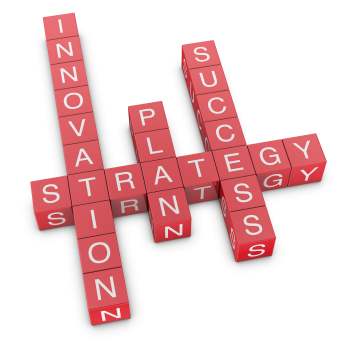This article was released in my CAMagazine column in March 2009. shortly after the great economic collapse of 2008.

Given the new economic volatility, shrieking stock market headlines, and the reappearance of a sense of dread in the corporate world in September 2010, it’s probably a good time to re-read the article.
There are countless examples where history has shown us that it is those organizations who focused on ensuring that they were still actively pursuing innovation — whether through product development, the exploration of new business models, external partnerships, the pursuit of new markets and customer groups — were those who managed to achieve the greatest success in the long run.
Catch the key line at the end: “The greatest mistake any organization can make right now is to do nothing.”
Keep Those Ideas Coming
Jim Carroll, March 2009
I have started to think about the events of the past few months in the context of economic grief — an emotional process closely related to the stages of bereavement. The economy unraveled so quickly that many organizations still find themselves in the early phases of economic grief, marked by shock and denial. Corporate idea factories have come to a standstill and innovation paralysis is settling in.
The result is that we’re not just in an economic recession; we’re entering an idea recession, similar to that of the last downturn starting in 2001. Yet, in allowing innovation to dry up, businesses are missing out on great opportunities for success. After all, companies such as Burger King, Microsoft, CNN and FedEx were all started up during recessions.
The Wharton School of the University of Pennsylvania released a provocative article in November 2008 suggesting a recession is the perfect time for disruptive innovation — that is, rewriting an industry’s business model to achieve significant growth. Think of Steve Jobs and the iPod, which he first released during a less-than-rosy economy in 2001.
So what do companies need to do to make the most of this recession? First, accept the economic reality. Those unable to move past shock, denial and anger through to acceptance will be innovation laggards and will only be ready to innovate once the market and industry recovery is underway. Unfortunately, that may be too late.
Innovation leaders, however, are prepared to keep their idea factories running (perhaps not at full tilt, but running nevertheless) in the face of uncertainty. They know there is still a place for innovative thinking despite the vast sections of the economy under stress. They know there are growth markets and opportunities for marketplace, distribution-channel and operational innovation. These leaders are aware ongoing change in consumer behaviour means there are still new ways to brand, grab customer mind share and forge unique and distinct relationships.
It is critical that organizations begin to undertake a series of bold actions that reorients them to face future challenges. These actions should include several integrated elements.
- Boost the experiential capital of the organization. Get your teams working on projects and ideas that build up their experience. For example, they might explore new methods of branding and marketing (particularly to the next generation); investigate technologies that can stream-line business processes; or work with distribution models that expand market potential.
- Identify weaknesses or areas for improvement. Consider what elements of the organization’s product line, skills or structure could benefit from specific innovation efforts. For example, are competitive threats emerging that you haven’t really thought about? What should you be doing to innovate your way around those challenges?
- Explore key opportunities through a variety of risk-oriented initiatives. If, for example, you focus on a customer-retention strategy (such as visiting every customer in the next three months to see if you are meeting their needs) can you put a stop to future revenue leakage?
The greatest mistake any organization can make right now is to do nothing. Inertia — real or implied — establishes a culture of inaction, and that can lead to another slippery slope. Today, innovation isn’t simply an option — it’s critical because it is the best way to gain traction.




GET IN TOUCH
Jim's Facebook page
You'll find Jim's latest videos on Youtube
Mastodon. What's on Jim's mind? Check his feed!
LinkedIn - reach out to Jim for a professional connection!
Flickr! Get inspired! A massive archive of all of Jim's daily inspirational quotes!
Instagram - the home for Jim's motivational mind!